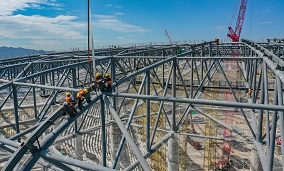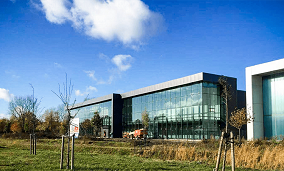Reinforcement of Steel Structure Factory Buildings
Steel structure buildings, during their usage, will inevitably encounter various issues, particularly when they have been in use for an extended period and reached a certain age, leading to potential quality problems. So, how should we approach the reinforcement of steel structure factory buildings?
Before planning the reinforcement of steel structure factory buildings, a reliability assessment should be conducted in accordance with the "Code for Reliability Evaluation of Industrial Buildings" and the "Code for Reliability Evaluation of Civil Buildings". Based on the assessment results, the content and scope of the reinforcement plan should be determined. Additionally, the safety level of the building's structure after reinforcement should be established, considering the severity of potential structural damage consequences and the requirements of the using organization.

Efforts should be made to retain and utilize the original structures and components, avoiding unnecessary demolition and replacement. The retained parts must ensure safety and durability, while demolition should consider the recycling and reuse of materials. Considering comprehensive technical and economic indicators, measures should be taken from the planning and construction organization perspectives to minimize the construction duration and disruptions to operations, ensuring minimal impact on the building's use.
Steel structure factory buildings may experience structural damage due to factors such as high temperatures, corrosion, freeze-thaw cycles, and uneven settlement of the foundation. Reinforcement must simultaneously address and mitigate these adverse factors to prevent further deterioration and avoid the need for secondary reinforcement.
The reinforcement methods for steel structure factory buildings include the following categories:
1.Enlarged Section Reinforcement Method: This method features simple construction techniques, strong adaptability, and mature planning and construction experience. It is suitable for reinforcing concrete in beams, plates, columns, walls, and general structures. However, the wet work during on-site construction is time-consuming, potentially impacting daily operations and slightly reducing the building's clear height after reinforcement.

2.Concrete Replacement Reinforcement Method: Similar to the enlarged section method, this method does not affect the building's clear height after reinforcement but also has the disadvantage of long wet work duration. It is applicable for reinforcing concrete load-bearing components such as beams and columns with low concrete strength or severe defects in the compression zone.
3.Bonded External Steel Reinforcement Method: Also known as the wet external steel reinforcement method, it offers reliable force bearing, simple construction, and minimal on-site workload but requires a significant amount of steel and is unsuitable for use in high-temperature environments above 600°C without protection. It is suitable for reinforcing concrete structures where a significant increase in the original component's cross-sectional size is not allowed but a substantial increase in bearing capacity is required.
4.Steel Plate Bonding Reinforcement Method: This method features rapid construction, minimal wet work (only a small amount of plastering, etc.), and limited impact on daily operations. After reinforcement, there is no significant impact on the original structure's appearance and clear height. However, the reinforcement effect largely depends on the bonding process and operation level. It is suitable for reinforcing flexural or tensile members subjected to static loads in normal humidity environments.
5.Fiber-Reinforced Plastic Bonding Reinforcement Method: Besides sharing similar advantages with the steel plate bonding method, it also offers corrosion resistance, moisture resistance, minimal increase in structural weight, durability, and lower maintenance costs. However, it requires special fireproof treatment and is suitable for reinforcing various types of concrete structural components and general structures subjected to various force types.

6.Wire Wrapping Method: This method has similar advantages and disadvantages to the enlarged section method. It is suitable for reinforcing concrete structural components with insufficient oblique section bearing capacity or where lateral restraint is required for compressed components.
7.Anchor Bolt Anchorage Method: This method is suitable for the renovation and reinforcement of concrete load-bearing structures with a concrete strength grade of C20 to C60. It is not suitable for severely weathered structures or lightweight structures mentioned above.



